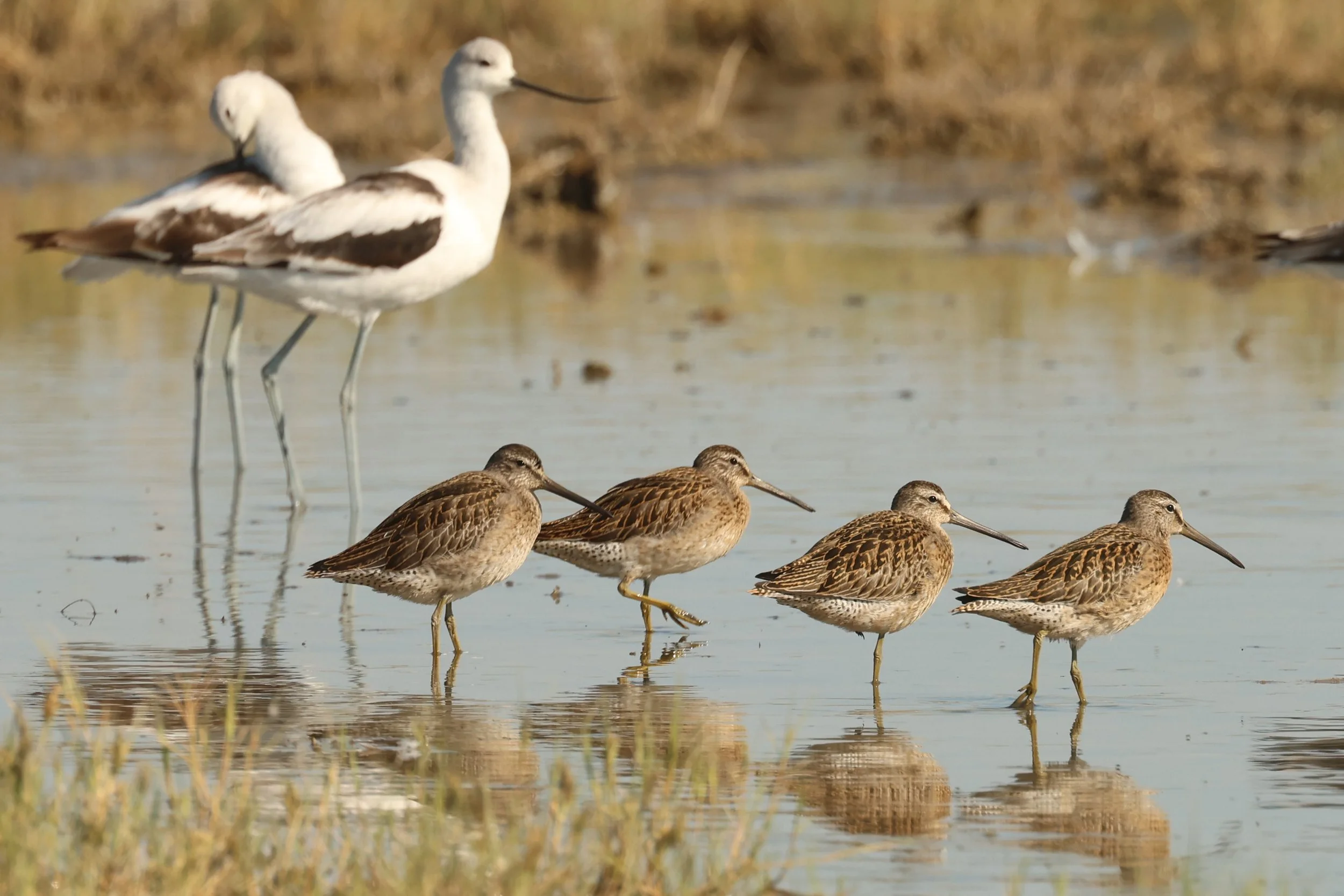Lesser Known Species Highlight: Long-billed Dowitchers
Meet the Long-billed Dowitcher (Limnodromus scolopaceus)!
Long-billed Dowitcher. Photo by Quinn Diaz
As we wrap up our Intermountain West Shorebird Survey this month, Long-billed Dowitchers are a lesser known Utah species to look out for during fall migration!
Like most shorebirds, they migrate thousands of miles to and from their breeding regions, and depend on habitats like the Great Salt Lake to rest and fuel their journeys. These crucial wetland ecosystems are being degraded by water diversion and climate change driven drought, putting many shorebirds species at risk.
Long-billed Dowitcher populations are at a tipping point, having lost over half of their population in the past 50 years. These birds are also considered imperiled in the state of Utah.
Short-billed Dowitcher. Photo by Mike Malmquist
Long-billed Dowitchers are medium sized shorebirds best known for their long bills, necks, and legs. These specialized features help them pick insects and aquatic invertebrates out of the mud and wade through water. Dowitchers spend a lot of time eating as they prepare for a long flight. Some of their favorite snacks include brine flies, worms, and mollusks. Dowitchers have a distinctive foraging technique in which they quickly move their bill up and down in a “sewing machine” motion.
During the breeding season, dowitcher plumage is speckled with a brilliant orange, brown and white. During the off season, their colors are subdued to more neutral tones. Dowitchers are often an overlooked shorebird species group due to their simple plumage, but sometimes less is more!
Short-billed Dowitchers. Photo by Quinn Diaz
Long-billed Dowitchers breed in the far northern tundra of Alaska and Canada, one of the most remote regions on the North American continent. They migrate across the majority of the US and Canada, spending time on wetlands, lakes and other water bodies. During the non-breeding season, they settle across Mexico and Central America.
Their close relative, the Short-billed Dowitcher, is easily confused for the Long-billed. A clear distinction between the two species is their migration routes. The Short-billed tend to stick to saltwater ecosystems and coastlines, whereas the Long-billed prefer freshwater and interior wetland ecosystems. Both species nest near the edges of water bodies, and feed on muddy flats. While Short-billed Dowitchers are a rare migrant in Utah, Long-billed Dowitchers are relatively common here during migration.
Short-billed Dowitchers. Photo by Mike Malmquist
Interested in learning more about conserving shorebirds like the Long-billed Dowitcher? Keep an eye out for our Spring 2026 Intermountain West Shorebird Survey, a community science opportunity where volunteers can help count shorebirds at the Great Salt Lake and sites across Utah! This survey takes place twice a year in the spring and fall. During our Spring 2025 Shorebird Survey, we counted 12,089 dowitchers!
Project leads scanning the shoreline. Photo by Sierra Hastings
Volunteers searching high and low for shorebirds. Photo by Sierra Hastings
This data informs us about the importance of ecosystems like the Great Salt Lake to shorebirds, which can then be used to decide how to best conserve their populations.
For more information on the Long-billed Dowitcher and other Shorebirds, visit the CornellLab.
Long-billed Dowitcher. Photo by Rick Fridell.
Article by Olivia Chase







